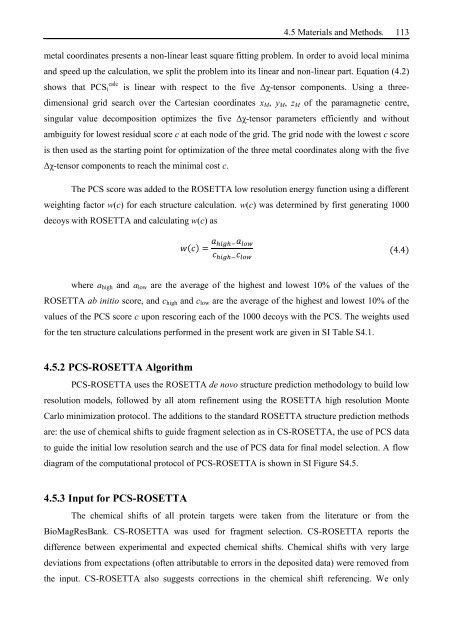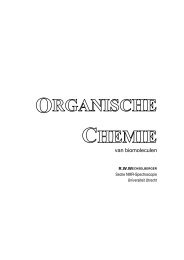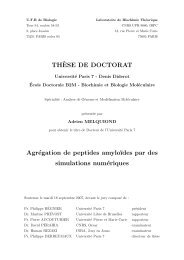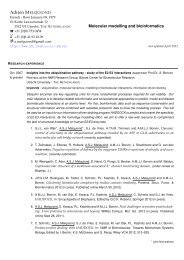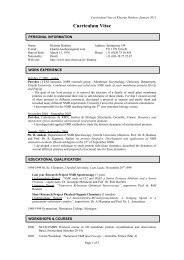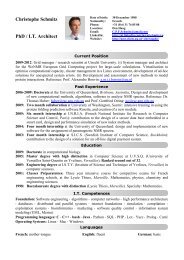Thesis Title: Subtitle - NMR Spectroscopy Research Group
Thesis Title: Subtitle - NMR Spectroscopy Research Group
Thesis Title: Subtitle - NMR Spectroscopy Research Group
You also want an ePaper? Increase the reach of your titles
YUMPU automatically turns print PDFs into web optimized ePapers that Google loves.
4.5 Materials and Methods. 113<br />
metal coordinates presents a non-linear least square fitting problem. In order to avoid local minima<br />
and speed up the calculation, we split the problem into its linear and non-linear part. Equation (4.2)<br />
shows that PCSi calc is linear with respect to the five Δχ-tensor components. Using a three-<br />
dimensional grid search over the Cartesian coordinates xM, yM, zM of the paramagnetic centre,<br />
singular value decomposition optimizes the five Δχ-tensor parameters efficiently and without<br />
ambiguity for lowest residual score c at each node of the grid. The grid node with the lowest c score<br />
is then used as the starting point for optimization of the three metal coordinates along with the five<br />
Δχ-tensor components to reach the minimal cost c.<br />
The PCS score was added to the ROSETTA low resolution energy function using a different<br />
weighting factor w(c) for each structure calculation. w(c) was determined by first generating 1000<br />
decoys with ROSETTA and calculating w(c) as<br />
(4.4)<br />
where ahigh and alow are the average of the highest and lowest 10% of the values of the<br />
ROSETTA ab initio score, and chigh and clow are the average of the highest and lowest 10% of the<br />
values of the PCS score c upon rescoring each of the 1000 decoys with the PCS. The weights used<br />
for the ten structure calculations performed in the present work are given in SI Table S4.1.<br />
4.5.2 PCS-ROSETTA Algorithm<br />
PCS-ROSETTA uses the ROSETTA de novo structure prediction methodology to build low<br />
resolution models, followed by all atom refinement using the ROSETTA high resolution Monte<br />
Carlo minimization protocol. The additions to the standard ROSETTA structure prediction methods<br />
are: the use of chemical shifts to guide fragment selection as in CS-ROSETTA, the use of PCS data<br />
to guide the initial low resolution search and the use of PCS data for final model selection. A flow<br />
diagram of the computational protocol of PCS-ROSETTA is shown in SI Figure S4.5.<br />
4.5.3 Input for PCS-ROSETTA<br />
The chemical shifts of all protein targets were taken from the literature or from the<br />
BioMagResBank. CS-ROSETTA was used for fragment selection. CS-ROSETTA reports the<br />
difference between experimental and expected chemical shifts. Chemical shifts with very large<br />
deviations from expectations (often attributable to errors in the deposited data) were removed from<br />
the input. CS-ROSETTA also suggests corrections in the chemical shift referencing. We only


